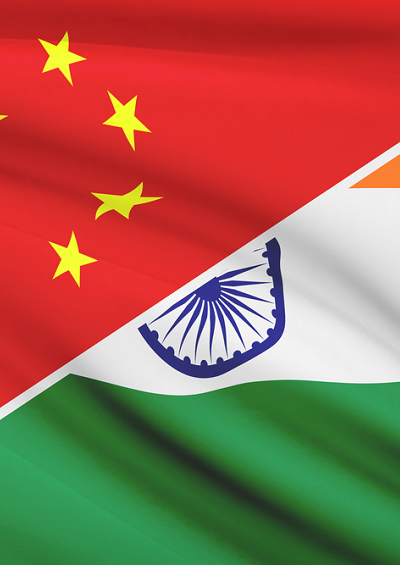The Xi-Modi Summit: A New “Pacific” Asian Century Without America?
The “Chindia reset” may gradually have a transformative effect on China—leaving the founding vision of America for a “Pacific” Asia behind.
May 6, 2018

For all the global attention paid to the historic inter-Korean summit at Panmunjom, a less covered and informal summit is likely to be as consequential.
Chinese President Xi Jinping and Indian Prime Minister Narendra Modi met at Chairman Mao Zedong’s summer villa in Wuhan of Hubei province in central China to opt for a “reset” the Sino-Indian relationship which goes back for millennia.
Closer neighbors and distant friends
China and India—the second and seventh-largest economies in the world—represent almost 40% of the world population. They see each other as leaders of the “Asian century” in the “new era” of President Xi that drive the engines of global economic growth.
Meanwhile, the United States and Europe are busily preoccupying themselves with the 20th century’s outdated game of geopolitics focusing on Russia and the Middle East.
A key reason for China advancing its foreign policy—with the Belt and Road Initiative, the Asian Infrastructure Investment Bank, and the South and East China Sea disputes—in an assertive fashion is that China’s policy path is now being favorably viewed by many quarters of the world.
This is true also by comparison to India. China’s model is viewed as more effective and efficient than the chaotic nature of India’s democratic governance—ultimately serving its people better.
Washington’s approach
The rapid technological development and modernization of China has vastly expanded its global influence.
To compensate, Washington has tried to revitalize its old Indo-Pacific region “quad” strategy, focused of strengthening the relationship with the Asian democracies of Australia, Japan and India. Their coming together is intended to serve as a unified force that is seemingly able to counter China’s rise.
Yet, America’s military-focused strategy only works if the United States has the economic maturity to address the increased defense expenditures and more importantly execute the need for domestic infrastructure development and investing in education. Otherwise, it will be hard to “Make America Great Again.”
India’s perspective
Sadly, for India, a real alliance with the distant United States is currently problematic, especially with the unreliable and chaotic Trump administration.
As former nonaligned movement countries, both Beijing and New Delhi shared an idealistic vision of independent national sovereignty—free of the colonial and Cold-War mentalities.
However, the Wuhan summit between Xi and Modi was driven by national interest, the fear of external powers and the pride of their own civilizational strengths. The two nations plan to cooperate more in trade, commerce and investment. China registers increasing numbers of Indian workers, tourists and university students.
The border disputes are still areas of concern for both countries. But the challenges are being managed. India currently views China as a growing military power, surrounded by smaller nations of Bangladesh, Nepal, the Maldives, Pakistan, and Sri Lanka that are economically (and perhaps militarily in the future) aligned with Beijing’s realm of dominance.
If that scenario bears out, India may likely consider the United States as a potential democratic ally to counter China’s assertive behavior.
America’s democracy
At this point in time, however, the calculus of being anti-China would not serve India well. That is why Modi’s India puts greater emphasis on cooperation with China, including on the global stage—like climate change. They are keen to usurp the space, which the United States has given up.
As a highly-decentralized governing system in India—with diverse ethnic, linguistic and religious groups working in a noisy democracy—only time will tell whether its model or China’s form of governance with centralized control will prove to be more effective.
Indeed, like India, China has a similar diversity of ethnic, linguistic and religious varieties, but it relies on a different governing model of Confucian democracy.
While the United States, as a global nation, is trying to find its rebirth with true democratic values and moral leadership, the “Chindia reset” may, over time, gradually have a transformative effect on China—leaving the founding vision of America for a “Pacific” Asia behind.
Takeaways
China and India—the second and seventh-largest economies in the world—represent almost 40% of the world population. They see each other as leaders of the “Asian century.”
The “Chindia reset” may gradually have a transformative effect on China—leaving the founding vision of America for a “Pacific” Asia behind.
India is cooperating with China on the global stage. They are keen to usurp the space which the US has given up.
A key reason for China advancing its foreign policy in an assertive fashion is that China’s policy path is now being favorably viewed by many quarters of the world.